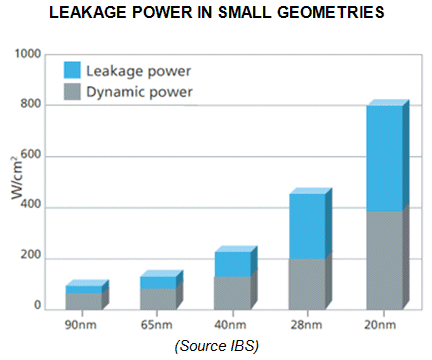Methods to Fine-Tune Power Consumption of PCIe devices
Philippe Legros, Romain Tourneau (PLDA)
Introduction
A basic paradox of electronic evolution is the desire to enable the execution of more functions while consuming less power and silicon area. For PCIe® applications, this goal is not a new one. A PCI power management specification has been available since 1997, and PCI Express® has featured native power management since its initial release in 2002. In addition, there has always been a recognized need for low power in the mobile market.
Historically, advances in ASIC technology have led to reductions in power, but this is no longer the case for the smallest geometries due to much higher leakage power. Leakage power—the power consumed by unintended leakage currents that do not contribute to the IC’s function, is a major problem that has been growing as process geometries shrink.

Drivers for Change
In addition to the mobile market, new markets such as datacenters, are increasingly concerned with power consumption numbers. According to Patrick Thibodeau of Computerworld, “U.S. data centers are using more electricity than they need. It takes 34 power plants, each capable of generating 500 megawatts of electricity, to power all the data centers in operation today”. The Internet of Things (IoT) and increased movement of all computer platforms to cloud computing has necessitated an increase in datacenter and server capacities. While ecological issues are always a concern, the cooling and power costs incurred for each additional MW of power consumed have become a real economic problem for business.
For these reasons, PCI Express designers are facing an ever-growing demand for lower consumption PCI Express devices. In order to optimize a PCIe design for low power, it is important to understand which power consumption figures are relevant for each type of application, and how they can be estimated.
Related Semiconductor IP
- AXI Bridge with DMA for PCIe IP Core
- PCIe Gen 7 Verification IP
- PCIe Gen 6 Phy
- PCIe Gen 6 controller IP
- PCIe GEN6 PHY IP
Related Articles
- Leverage always-on voice trigger IP to reach ultra-low power consumption in voice-controlled devices
- How Low Can You Go? Pushing the Limits of Transistors - Deep Low Voltage Enablement of Embedded Memories and Logic Libraries to Achieve Extreme Low Power
- Growing demand for high-speed data in consumer devices gives rise to new generation of low-end FPGAs
- Design considerations for power sensitive embedded devices
Latest Articles
- A 14ns-Latency 9Gb/s 0.44mm² 62pJ/b Short-Blocklength LDPC Decoder ASIC in 22FDX
- Pipeline Stage Resolved Timing Characterization of FPGA and ASIC Implementations of a RISC V Processor
- Lyra: A Hardware-Accelerated RISC-V Verification Framework with Generative Model-Based Processor Fuzzing
- Leveraging FPGAs for Homomorphic Matrix-Vector Multiplication in Oblivious Message Retrieval
- Extending and Accelerating Inner Product Masking with Fault Detection via Instruction Set Extension